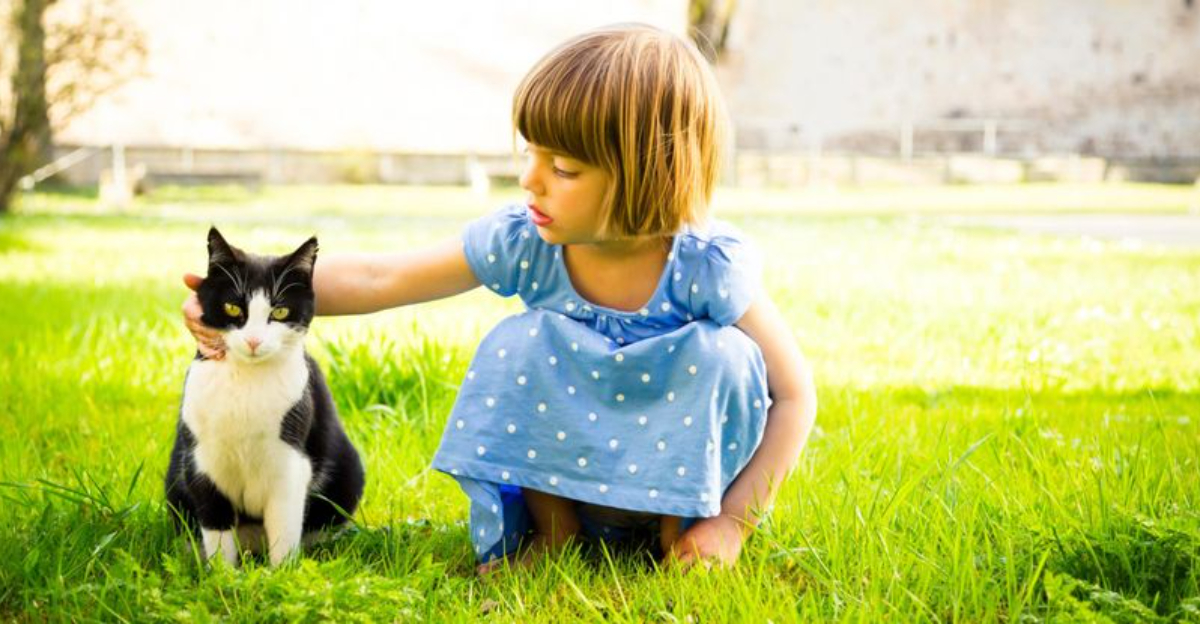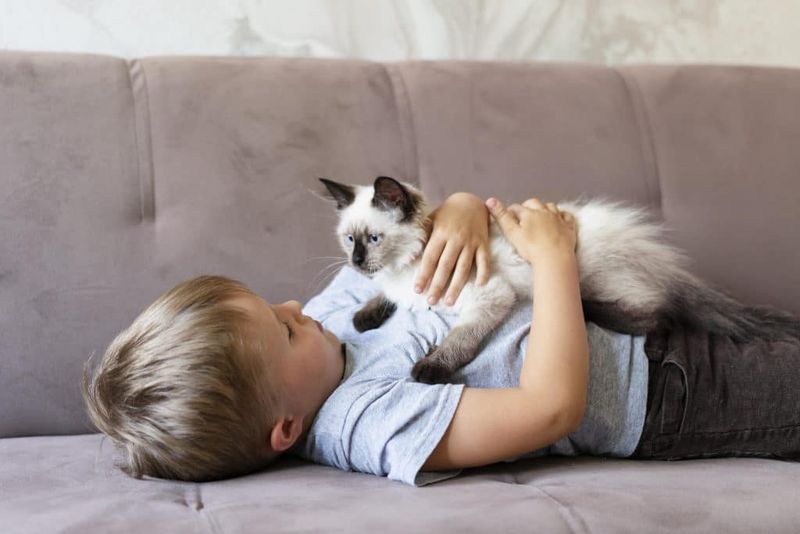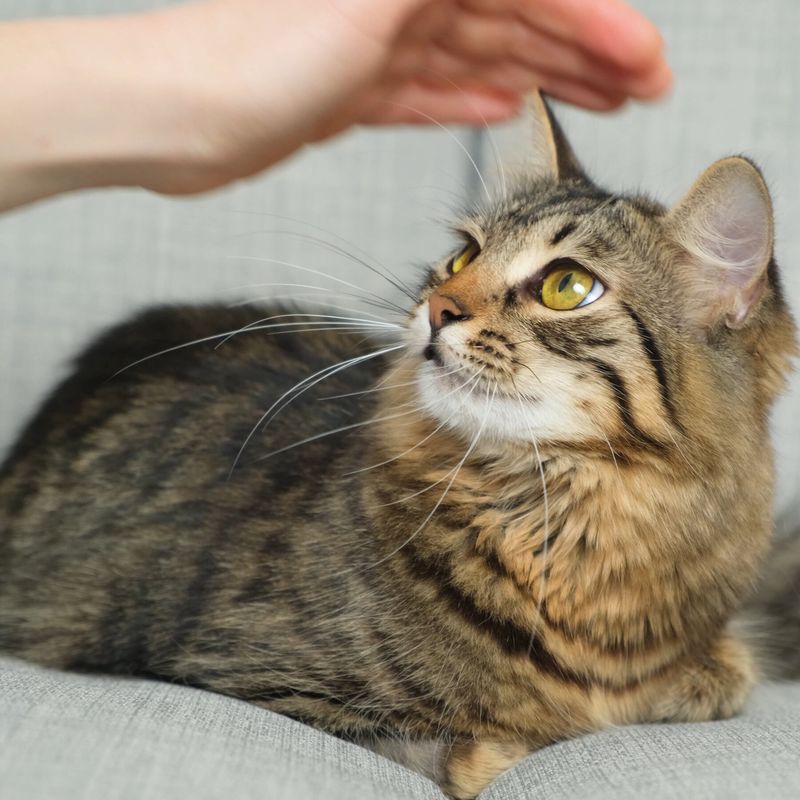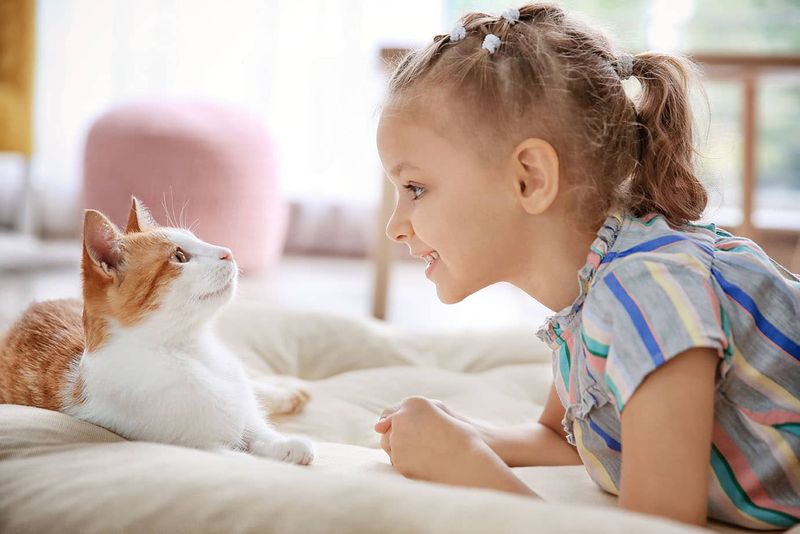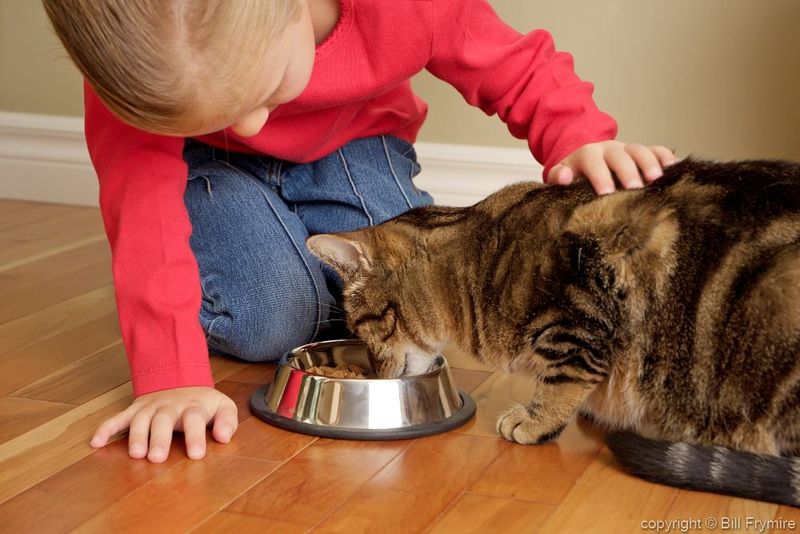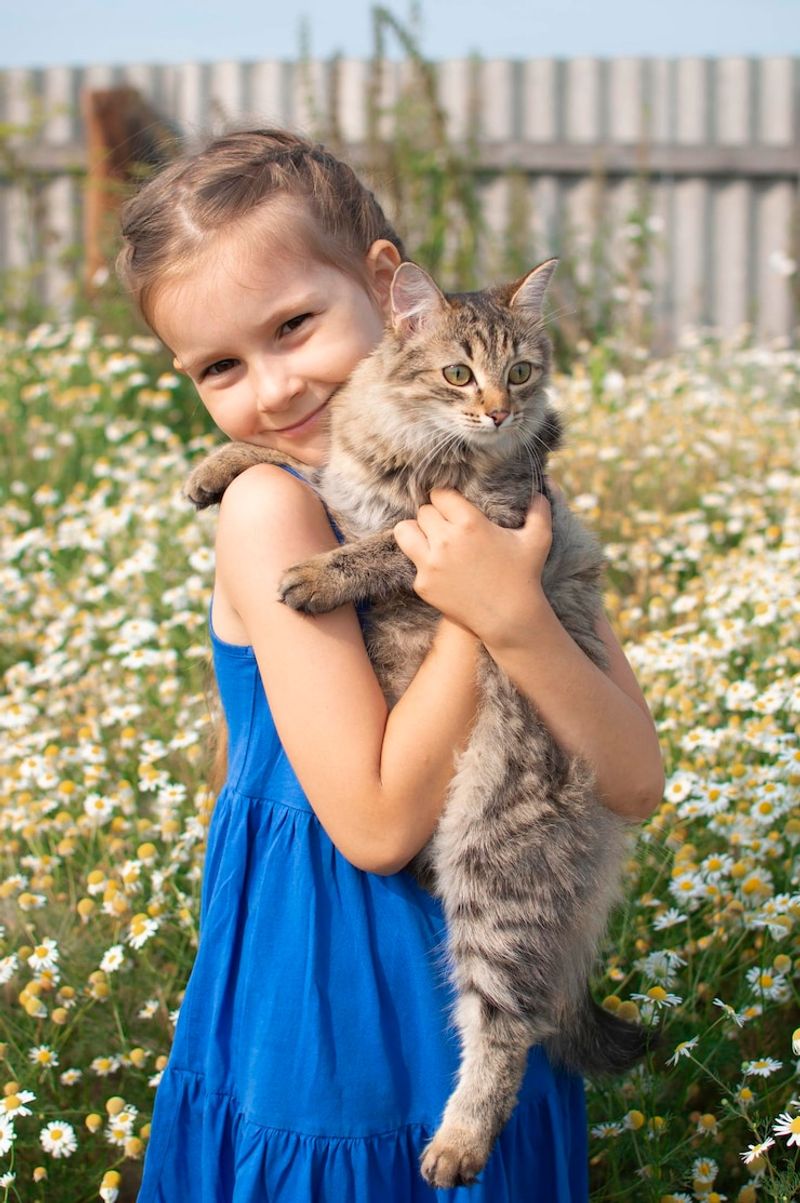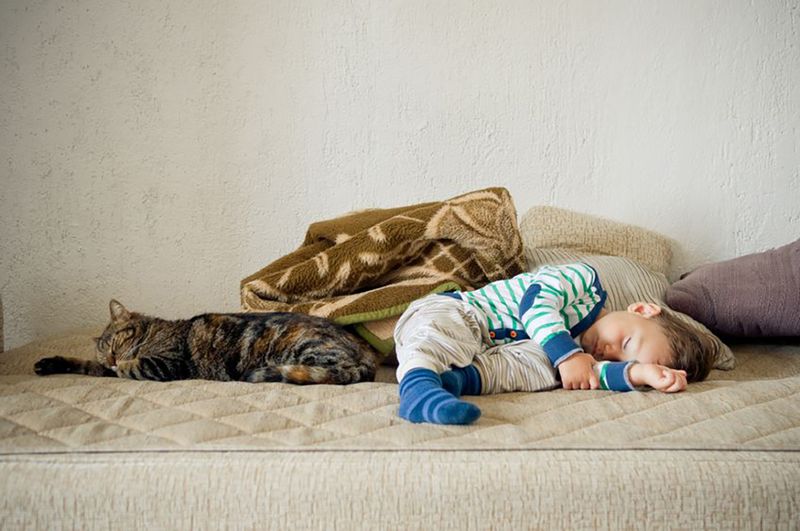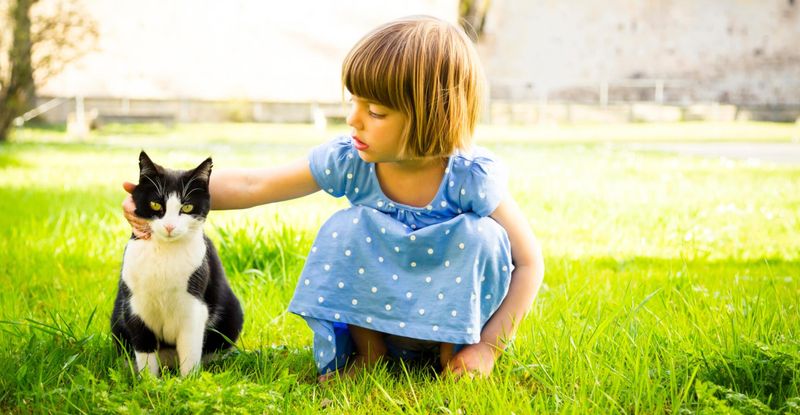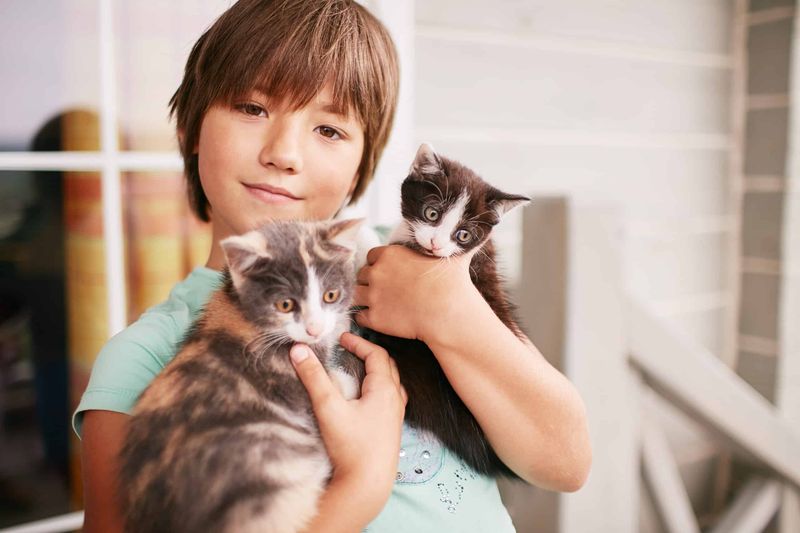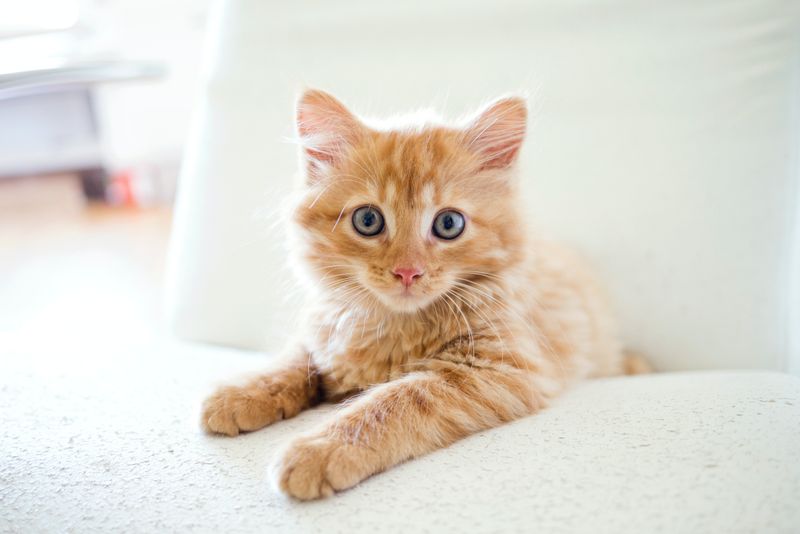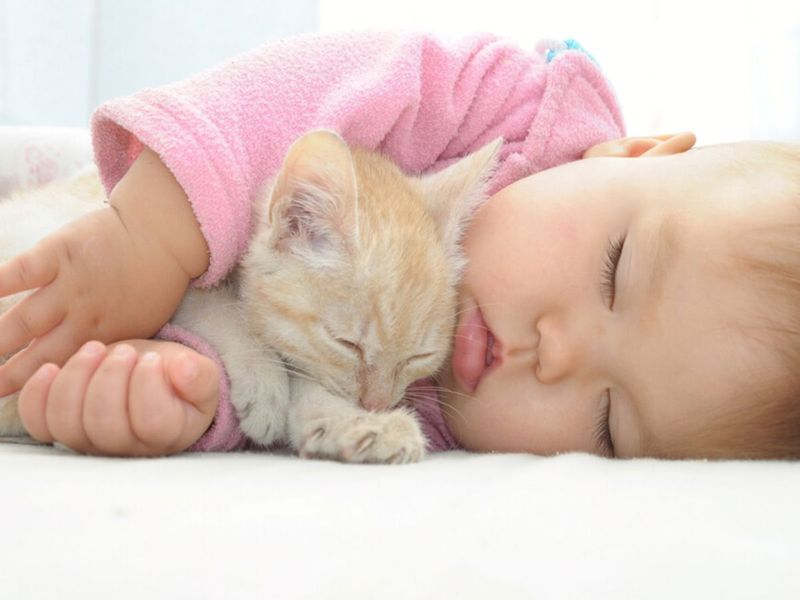📖 Table of Content:
Cats are much more than just adorable pets; they often become vital sources of emotional support for children. Their soothing presence and unwavering affection form a bond that nurtures a child’s emotional health. This connection can help children develop essential skills like empathy, patience, and responsibility.
Beyond companionship, cats provide comfort and stability during challenging moments in a child’s life. Their quiet, calming nature helps reduce stress and anxiety, offering a sense of safety and reassurance. This gentle support can be especially meaningful when children face difficult emotions or situations.
Through daily interactions, cats encourage children to care for another living being, fostering a sense of responsibility and compassion. The lessons learned from these relationships often translate into improved social and emotional growth. Ultimately, cats contribute in unique ways to the healthy development of children.
1. Furry Stress Relievers
Studies show that petting a cat for just 10 minutes can lower stress hormones in children. The rhythmic purring creates a natural calming effect, helping kids manage anxiety and overwhelming emotions.
After-school meltdowns often dissolve when a furry friend jumps into a child’s lap. The simple act of stroking soft fur redirects focus and helps regulate breathing patterns naturally.
For children with sensory processing challenges, a cat’s predictable texture provides consistent sensory input that grounds and centers them during overwhelming moments.
2. Judgment-Free Listeners
Cats offer the perfect audience when children practice reading aloud or need to talk through problems. Unlike humans, they never criticize pronunciation or interrupt with solutions when a child just needs to vent.
Many children feel more confident developing verbal skills with a feline friend. The pressure of human judgment disappears, allowing natural learning progression without self-consciousness.
Reading programs across the country now incorporate therapy cats because educators notice significant improvement in reading skills when children read to animals rather than adults.
3. Emotional Intelligence Teachers
Through their body language, cats teach children to recognize important non-verbal messages. Children learn to observe small details like ear angles, tail movements, and changes in stance.
This natural observation develops empathy as children must consider another being’s feelings before interaction. They discover that forcing affection never works with cats – consent and respect must be earned.
The skills gained from interpreting feline communication transfer to human relationships too. Children who grow up with cats often show greater sensitivity to others’ emotional states and boundaries.
4. Responsibility Builders
Caring for a cat provides children with age-appropriate responsibilities that build confidence and self-sufficiency. Even young kids can help fill water bowls or measure food portions with supervision.
The daily routine of pet care teaches consistency and follow-through without overwhelming children. Unlike more demanding pets, cats require moderate care that matches their developing capabilities.
Parents report that cat-related chores face less resistance than typical household tasks. The immediate reward of a happy, purring cat creates natural motivation for completing responsibilities without constant reminders.
5. Comfort During Life Changes
During family transitions like moves, divorces, or new siblings, cats provide stability and familiar comfort. Their consistent presence helps children navigate emotional upheaval with greater resilience.
Unlike humans, who may be caught up in the chaos of change, cats maintain their routines and affection patterns. This predictability gives children an emotional anchor when everything else feels uncertain.
Child psychologists often recommend maintaining pet relationships during major life transitions. The unconditional love of a familiar animal creates a safe emotional space for processing complex feelings.
6. Natural Sleep Companions
Children who struggle with bedtime fears often find comfort in a feline sleep buddy. The gentle weight and warmth of a cat create security that helps anxious kids relax into sleep more easily.
The rhythmic sound of purring works like a natural white noise machine. Many parents report that children with cats experience fewer nightmares and midnight wake-ups.
Sleep researchers have found that the presence of a trusted pet can increase production of oxytocin, the bonding hormone that promotes feelings of safety and relaxation – perfect for establishing healthy sleep patterns.
7. Grief Processing Partners
The loss of a grandparent, a friend moving away, or other childhood sorrows can be processed more gently with a cat nearby. Their quiet presence provides comfort without the pressure to “cheer up” that sometimes comes from well-meaning adults.
Cats naturally seek out people experiencing strong emotions. Many parents observe their normally independent cat choosing to stay close to a grieving child, as if they sense the need for extra support.
The physical act of holding and stroking a pet releases endorphins that help regulate emotional distress. This natural coping mechanism helps children move through grief at their own pace.
8. Confidence Boosters
Earning a cat’s trust builds remarkable confidence in children. Unlike dogs who often give affection freely, cats require patience and respect – when they choose a child as their person, it feels like a special achievement.
Shy or socially anxious kids often practice social skills with their cats first. The low-pressure interaction builds conversational habits and nurturing abilities that eventually transfer to human relationships.
Successfully caring for another living being creates a sense of competence that extends beyond pet ownership. Children who master cat care often approach new challenges with greater self-assurance.
9. Mindfulness Mentors
Cats are natural mindfulness teachers, showing children how to be fully present in the moment. Their focused attention when playing or observing demonstrates complete immersion in the now – a skill many adults struggle to master.
The slow blink of a content cat provides a perfect opportunity to practice reciprocal mindfulness. Children learn to slow down, make eye contact, and engage in non-verbal communication that requires presence of mind.
Many parents incorporate “cat time” into daily routines as a screen-free activity that naturally draws children away from digital distractions and into sensory-rich, real-world engagement.
10. Allergy Resistance Developers
Recent research suggests early exposure to cats may actually prevent allergies. Children raised with feline companions often develop stronger immune systems that are less reactive to common allergens.
The “hygiene hypothesis” indicates that the microbiome diversity introduced by pets helps train developing immune systems to respond appropriately to environmental triggers. This early training may reduce asthma rates and other inflammatory conditions.
Beyond physical benefits, children who grow up with cats learn to care for beings different from themselves. This nurtures compassion and respect for all living creatures – qualities that benefit society as a whole.
